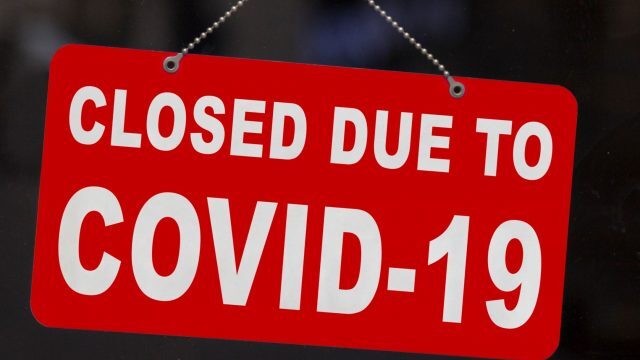One of the ongoing controversies in recent days is the dispute over which should be the nation’s top priority: economic recovery or pandemic precautions? Both positions are framed in the same terms: no recovery will be successful if everybody is afraid of catching the virus; likewise, drastic prevention measures, if continued, will bring on the worst economic disaster since the Great Depression of the 1930’s. The answer is that both positions are essentially correct.
We cannot afford either of these alternatives. Common sense tells us that we must resume full economic recovery as soon as possible, but we ignore the frightful prospect of an unchecked pandemic at our own peril. Each consideration has its own imperative: we must resume economic activity at its fullest capacity as soon as possible and we take all reasonable precautions at the same time.
So, the key question is: what are reasonable measures for protecting ourselves as a society?
The first answer to this question is what we should not do. We should not trust the public health officials’ solution to this problem. They speak from a very limited perspective, namely, the optimal methods for avoiding the disease altogether. Obviously, the surest way to avoid the disease is to cease all human contact entirely — “shelter in place”. There are several economic activities which can be executed alone, thanks to the internet and the telephone, such as, writing, meeting, accounting, record-keeping, reporting, selling (some items), etc. The surge of some sectors of the economy, such as mail-orders and delivery services, show the enhanced value of such activities.
Starting from avoiding all human contact as the best protection for individuals — which even public health experts realize is not doable for most people — the next step is simulating “personal quarantine”. Thus “social distancing” and masks. This practice is marginally practical, meaning it can be done successfully by people engaged in some economic activities, such as counseling and lecturing.
Most economic activities, however, require closer contact. Therein lies the problem. Since most manufacturing and service industries are not compatible with “social distancing”, and since the nation cannot survive economically without these major sources of income, and, further, since the pandemic is not going away any time soon – in view of all these factors, another solution has to be forthcoming.
What is that solution? It seems clear that the solution is to carry on our economic life, using as many precautions as are feasible but not to the extent of continuing to suspend any significant activities which do not lend themselves to such precautions. For example, the practice of taking the temperature of all entrants to a building and requiring masks to be worn while inside – as being practiced in more and more venues already – can be adopted by far more businesses. Perhaps even on a mass scale such as ball games. Yes, it increases the cost of doing business, but that is better than no business at all. Imagination and creativity will be needed to cope with these issues. But those are characteristic attributes of Americans. The new question needs to be “How?” not “If”.
And how do we regain the confidence of the American public? How do we answer the inevitable charge that we are putting money ahead of saving lives?
The first thing we do is to stop measuring the success or failure of our efforts to contain the virus by the number of cases identified. This number is bound to increase as more and more people are tested every day. The proper metric is the death rate due to the virus. Even with the sloppy counting being used, the rate of COVID-19 deaths is actually going down. For example, the percent of deaths to cases reported for July 11 was 1.3%. (Source: Johns Hopkins CSSE) Longer term reports are equally encouraging.
What accounts for this statistic? In general, there are several reasons for this progress:
1) therapeutics are increasingly effective – both human competence, which has improved with experience, and new medicines which have been developed specifically to treat this COVID-19 illness. Treatment can be expected only to improve with more of both human and pharmaceutical development. Also, vaccines are due to start becoming available by the end of 2020.
2) Hospitals are getting more efficient in their protocols and procedures. The metric for the early preparatory efforts by the Administration was the fear of overcrowding the hospital capacity of the United States. While this is still a possibility on a local level, the occupancy is currently under control.
3) As younger people start to constitute a larger percentage of the total test population, mortality rates are expected to continue to decline because the virus appears to be less lethal for youths. In fact, many youngsters who have been infected never suffer any symptoms at all. In fact, their primary danger as a group seems to be their unwitting role as carriers of the disease to older contacts.
In general, America is learning to live with COVID-19 and to survive. It is now time to begin to flourish as we were before we were so rudely interrupted.

